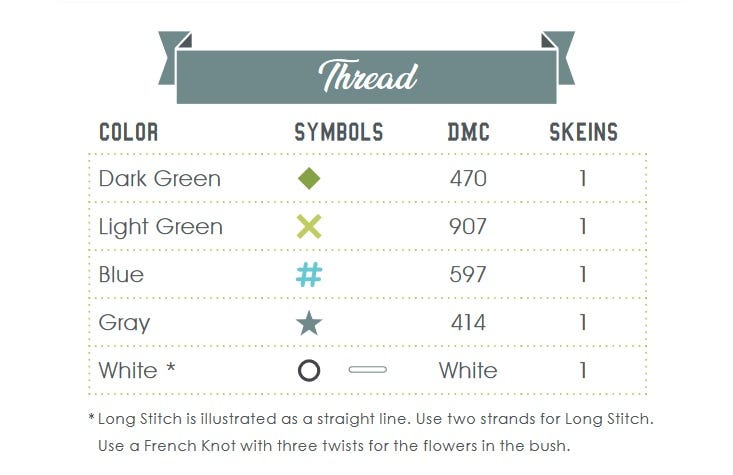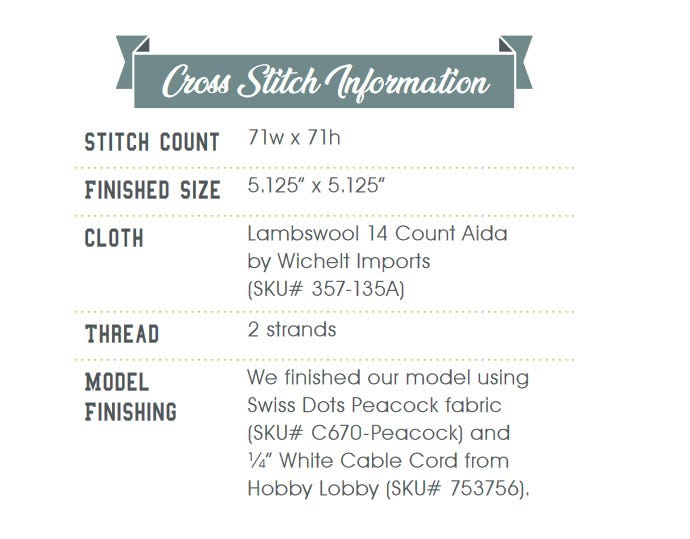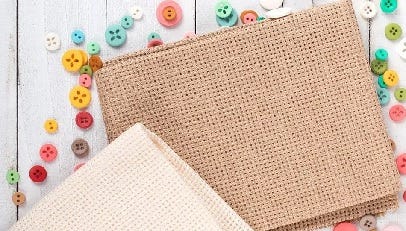Cross Stitch Instructions for Beginners
If you're new to cross stitching, the thought of trying to read a cross stitch pattern can be intimidating. While the detailed patterns may appear complex, they're actually quite intuitive once you understand how they work.
Understanding the Cross Stitch Grid
Cross stitch patterns are created using a grid system. The grid is made up of horizontal and vertical lines that intersect to create small squares, much like the grid paper you may have used in math class. Each of these squares represents a single stitch that corresponds to the thread colors indicated in the legend.
Most cross stitch chart grids are broken up into 10 x 10 sections, outlined with darker lines, and some charts are labeled in intervals of 10. These sections and line numbers are included in the pattern to help you track your place as you cross stitch.
Most charts also include arrows along the outer edge to point toward the center vertical and horizontal lines.
When stitching a smaller pattern, you'll typically be able to keep track of your place using your finger, but for large patterns, even the most seasoned cross stitchers will use a ruler with a pencil or tools such as magnetic rulers to mark their progress.
Reading the Cross Stitch Legend and Symbols
An important element of learning how to read a cross stitch pattern is understanding the legend and the various symbols.
The legend is a key that corresponds to the different thread colors used and different stitches used in the chart, such as back stitches, and French knots in the pattern.
In full-color charts, thread colors are depicted using a unique symbol and color block. In contrast, black and white printouts rely only on unique symbols to indicate the different thread colors in the pattern. For beginners, full-color charts will be the easiest to work with.
Each color will have its own color name and corresponding thread sku listed (most patterns list DMC Thread) so that you can easily find the right thread for your project. Some legends may include thread brand substitutions with their corresponding color numbers.
Cross stitches, back stitches, and French knots are broken down into their own unique symbols to help you understand which stitch to use and when. Usually cross stitches are a full square, back stitches are a colored line, and French knots are round dots.
Cross Stitch Pattern Notes
In addition to the thread color key and stitch symbols, most professionally-produced cross stitch pattern will also include a set of pattern notes.
Stitch Count
The first thing you'll notice in the pattern notes is the stitch count, which indicates the number of stitches, width and height, that the final pattern will be.
Finished Size
The finished size is how large the final stitched project will be based on the fabric count.
Use Fat Quarter Shop's Cross Stitch Calculator to determine how much fabric you'll need for your project.
Strands
Strand count indicates the number of strands of floss you should use for each stitch (cross stitch, back stitch, and French knot). Depending on the chart creator, the strand count will either be listed in the pattern notes, in the legend, or in small square brackets [2] next to the corresponding symbol in the pattern.










